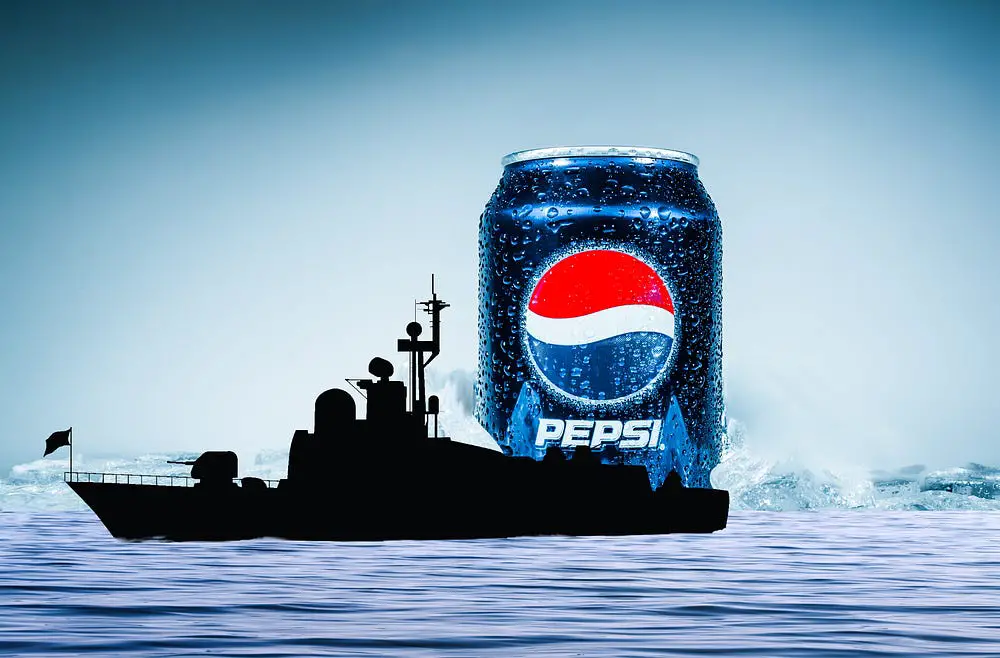For a short moment in the late-1980s, Pepsi became the 6th largest navy in the world because of a deal with the Soviet Union. Here’s the story behind how it all happened.
The story of Pepsi’s rise to having a navy started in 1959 when Vice President Richard Nixon and Soviet Premier Nikita Khrushchev attended the American National Exhibition held in Moscow. Also in attendance was Donald Kendall, then a Vice President of Pepsi. When Nixon and Khrushchev began arguing about capitalism and communism, Kendall stepped in with a few small cups of Pepsi. Khrushchev liked what he tasted.
A few years later, Pepsi made an agreement to ship their drink to the Soviet Union, the first such agreement between a capitalist US company and the communist USSR. But there was a problem. Soviet hard currency wasn’t accepted outside of the country’s borders. The Soviets did have something else they could trade in the place of hard currency — their state-owned vodka brand, Stolichnaya. And that’s what Pepsi agreed to do. They would ship Pepsi to the Soviet Union, and in exchange, they would receive shipments of Stolichnaya vodka to be resold in the United States.
The deal went well for about ten years, but when the Soviet Union invaded Afghanistan in 1980, things began to change, and Soviet products began to be boycotted. That included Stolichnaya vodka. Sales began to plummet, and Pepsi was no longer getting a deal that was worth anything.
The Soviet Union, however, had developed an excessive thirst for Pepsi over the years and didn’t want the agreement to end. Pepsi and the Soviets came up with an alternative plan in 1989. The Soviets would pay for shipments of Pepsi by offering the soda maker some of their warships, specifically a frigate, a destroyer, a cruiser, 17 submarines, and a few oil tankers. The deal made Pepsi the sixth-largest navy in the world. The ships they took in the deal weren’t exactly fit for military service, however, and the Pepsi navy didn’t last long. The company soon sold the fleet of ships to a Swedish company that turned them into scrap metal.
When the deal was renegotiated in 1990, Pepsi estimated that the new agreement would bring in $3 billion in Pepsi and vodka sales, and under the terms, Pepsi would expand their bottling plants from 26 to 50 in Russia, they would begin to expand their Pizza Hut line into Russia, and they would start a new venture where they would sell and lease Soviet-built ships. But the “Deal of the Century,” as Pepsi referred to it, didn’t last long. When the Soviet Union disintegrated the following year, the deal was done.
Pepsi didn’t give up, however, and began negotiations with the new countries left over from the former Soviet Union. And they found themselves bartering again. They made deals for mozzarella from southern Russia to supply their Pizza Huts in Moscow, they bought and resold cotton from Uzbekistan to fund syrup and equipment sales and sold double-hulled tanker ships to finance Pizza Huts and Pepsi bottling plants in Ukraine.
Sources: Business Insider, The New York Times, The LA Times, Washington Post


